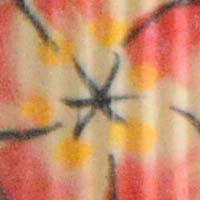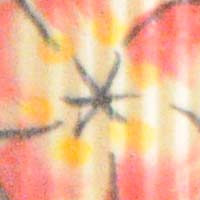Nikon D3 Review
Review Date: February 18th 2008
Author: Gavin Stoker
Leave a comment about this Review
|
Image Quality
All of the sample images in this Review were taken using the 12 megapixel Fine JPEG setting, which gives an average image size of around 5Mb.
Noise
There are 9 ISO settings available on the Nikon D3 which you can select at any time if the camera is in any shooting mode. The Nikon D3 controls noise exceptionally well, with scarcely a hint all the way up to ISO 6400 ensuring there's a need to check file info in Photoshop to check you can believe what you're seeing. I can't imagine many occasions when you're going to need to stretch to ISO 25600 – the latter resulting in an over-exposed interior shot that looked like a flare had gone off – with ISO 6400 more than enough for dull or twilight conditions, but it's there if you want it. Here are some 100% crops which show the noise levels for each ISO setting:
LO 1EV (ISO 100) (100% Crop) |
ISO 200 (100% Crop) |
 |
 |
ISO 400 (100% Crop) |
ISO 800 (100% Crop) |
 |
 |
ISO 1600 (100% Crop) |
ISO 3200 (100% Crop) |
 |
 |
ISO 6400 (100% Crop) |
HI 1EV (ISO 12800) (100% Crop) |
 |
 |
HI 2EV (ISO 25600) (100% Crop) |
|
 |
|
Sharpening
Here are two 100% crops which have been Saved as Web - Quality 50 in Photoshop. The right-hand image has had some sharpening applied in Photoshop. The out-of-the camera images at the Standard setting are slightly soft and benefit from some further sharpening in a program like Adobe Photoshop. Alternatively you can change the in-camera sharpenening level if you don't like the default results.
Original
(100% Crop) |
Sharpened (100% Crop) |
 |
 |
 |
 |
Chromatic Aberrations
The Nikon D3's AF-S Nikkor 24-70mm 1:2.8G ED kit lens handled chromatic aberrations extremely well, with just a little pixel fringing visible on very close inspection, as shown in the example below.
Example
1 (100% Crop) |
 |
Flash
The flash settings on the Nikon D3 are Front-curtain sync (normal), Slow sync, Rear-curtain sync, Red-eye reduction, and Red-eye reduction with slow sync. As there is no built-in pop-up flash, you need to fit an external flashgun. Consequently we couldn't test the flash settings, so instead we have some test shots showing the wide and tele zoom settings of the AF-S Nikkor 24-70mm 1:2.8G ED kit lens, plus a naturally lit portrait.
These shots of a white coloured wall were taken at a distance of 1.5m.
Flash Off - Wide Angle (24mm) |
Flash-Off - Tele (70mm) |
 |
 |
And here is a naturally lit portrait.
Flash Off |
Flash Off (100% Crop) |
 |
 |
Night Shot
The Nikon D3's maximum shutter speed is 30 seconds and there's also a Bulb option for longer exposures, which is great news if you're seriously interested in night photography. The shot below was taken using a shutter speed of 1/4 second, aperture of f/2.8 at ISO 8000. I've included a 100% crop of the image to show what the quality is like.
Night Shot |
Night Shot (100% Crop) |
 |
 |
Overall Image Quality
With the supplied AF-S Nikkor 24-70mm 1:2.8G ED zoom lens bolted to the front of our D3 and a 1GB Kingston CompactFlash installed for the duration of the test, I haven't been so impressed with a set of images since trialing Fuji's S5 Pro, itself boasting Nikon heritage. For the purposes of the images displayed here I was shooting large size, fine quality JPEGs. The Nikon D3's images have a smooth, film-like quality to them, with colours realistically and accurately rendered – primary colours in particular delivering plenty of punch. There is also a plethora of fine detail in evidence that in truth goes beyond that actually needed by print media. The images from our recent Nikon D300 review were very impressive, but the D3 blows them out of the water.
Like its enthusiast-targeted sibling, the Nikon D3 controls noise exceptionally well, with scarcely a hint all the way up to ISO 6400 ensuring there's a need to check file info in Photoshop to check you can believe what you're seeing. I can't imagine many occasions when you're going to need to stretch to ISO 25600 – the latter resulting in an over-exposed interior shot that looked like a flare had gone off – with ISO 6400 more than enough for dull or twilight conditions, but it's there if you want it.
Given good conditions – and in between bursts of heavy rain – the shafts of winter sunlight that graced our test period proved ideal, there was surprisingly little evidence of camera shake to be had – though if you're running through the gamut of ISO options indoors without flash, a tripod is a must. Used for portraits at maximum telephoto, the bundled full frame lens delivers a pleasing set of results, the clarity such that the photographer is visible in the subject's pupils, while wide angle provides the opportunity to also take in landscapes and group portraits (for say, a wedding photographer).
If we're picking holes, there is some pixel fringing visible on very close inspection, a slight fish eye effect at maximum wideangle, some shading and loss of sharpness toward the edges of the frame using the supplied lens, but in truth neither mars an image – especially one that's likely to end up in the forgiving media of print. And although, set on continuous AF, focus may occasionally wander in the middle of a rapid-fire burst of shots when shooting an action sequence, the Nikon D3 is happily back on the money within a couple of frames.
Overall the Nikon D3 is capable of delivering some exceptional imagery, whether shooting day or night, single shot or continuous bursts, JPEG, TIFF or RAW – and images that jump out from the screen like they do are going to serve jobbing photographers well in the business of impressing busy picture editors.
|
![]() PhotographyBLOG
is a member of the DIWA
organisation. Our test results for the Nikon D3 have been submitted to DIWA
for comparison with test results for different samples of
the same camera model supplied by other DIWA
member sites.
PhotographyBLOG
is a member of the DIWA
organisation. Our test results for the Nikon D3 have been submitted to DIWA
for comparison with test results for different samples of
the same camera model supplied by other DIWA
member sites.
